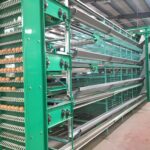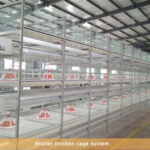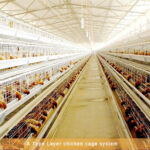Main points of environmental management for broiler breeding equipment
In the current broiler breeding industry, most farmers will use some chicken battery cage for broilers to raise broiler chickens, and most of them are enclosed chicken coops, so the environmental management of broiler chickens in the process of breeding broilers becomes particularly important, no matter it is Both equipment and enclosed chicken farming have relatively high environmental requirements. Only when environmental management is done can broiler chickens be raised better. Here are some management points for the broiler chicken environment for farmers.

1. The temperature management of the chicken house: The temperature in the chicken house will affect the growth rate of the broiler and whether the broiler is healthy. Therefore, the temperature control of the breeder is the key. Generally, when the broiler is young, the breeder should increase the temperature of the chicken house. In the first 2 weeks, the temperature should be 32-35℃, and the temperature change should not be too different from the body temperature. If it exceeds 8℃, it is easy to cause death. During this period, the chicks are weak in physique, with few feathers, and cannot rely on their own body temperature to maintain a constant body temperature, and must rely on artificial control of the ambient temperature. After 2 weeks of age, it is more appropriate to decrease the temperature by 3℃ every week. The cooling rate is too fast, the young meat will not adapt, and too slow is not good for feather growth. Starting from 5 weeks of age, keeping the ambient temperature at 20-25°C is the most beneficial for both the weight gain rate and feed return. Broilers must pay great attention to temperature control during the entire feeding period.
2. Ventilation management of the chicken house: The ventilation of the closed chicken house is generally carried out by the fan of the broiler breeding equipment. The broiler grows fast, and the number of rearing is large. There are a lot of carbon dioxide and ammonia in the manure, which easily affect the health of the chickens. Households must adjust the ventilation in the house in time according to the temperature and the needs of broiler growth to remove harmful gases from the house and allow fresh air to enter the house.
3. The light management of the chicken house: the light of the closed chicken house is carried out by the light. The purpose of the light work is to extend the feeding time and promote the growth rate. The light time is generally 23 hours a day and 1 hour dark. Generally, the lighting will be intermittently implemented at night from the second week onwards, that is, the lights will be turned on and the lights will be turned off after eating. However, it is important to have enough feeding time each time, otherwise it will affect the feed intake and cause uneven growth. The light intensity is slightly stronger for the first three days, preferably 10 lux, so that the chicks are familiar with the environment, easy to find food and drinking water, and then reduce the light intensity to a minimum intensity of 2.5-5 lux. Poor light can reduce the occurrence of chicken habit, and the chicken flocks are safe and good for growth and fattening.
4. Humidity management of the chicken house: Generally speaking, within a suitable temperature range, the ideal relative humidity is 60-65%. In addition, farmers should pay attention to when the relative humidity in the house is lower than 40%, the broiler will Poor feather growth occurs, and it will cause a large increase in dust in the air, which can easily lead to respiratory diseases.
The above four points are about the Broiler battery cage equipment system in the process of raising chickens for the farmers. Some management points for the chicken house environment of the farmers. Only by providing a comfortable and hygienic environment for the broiler can the broiler grow better. Farmers improve their efficiency.










